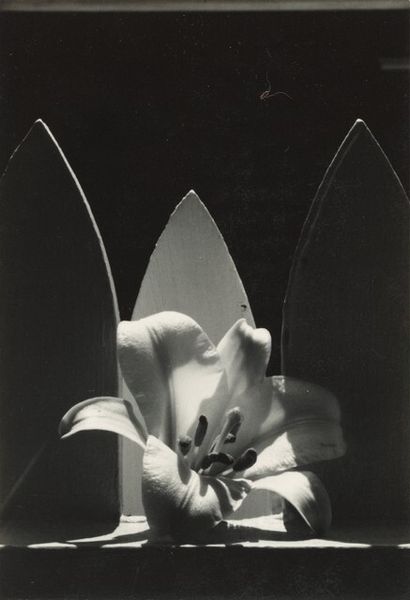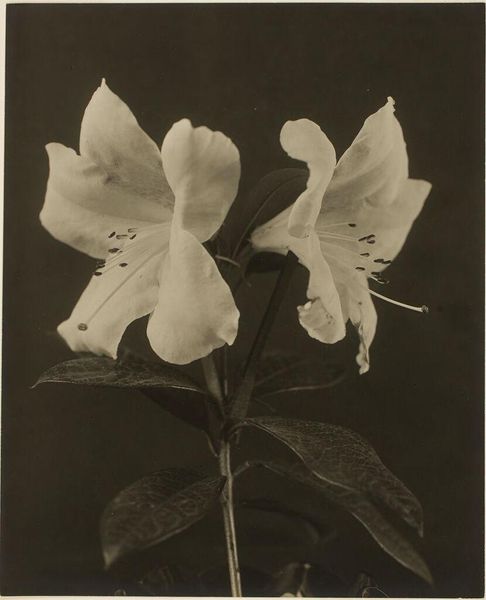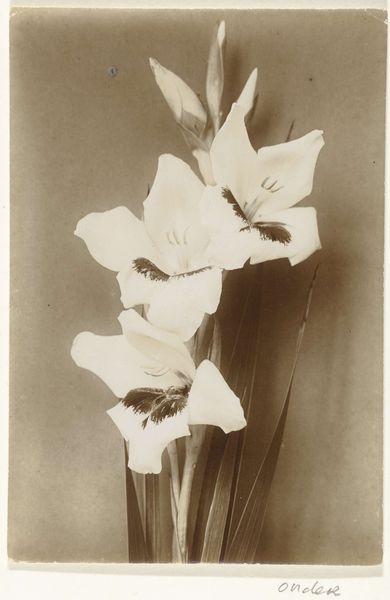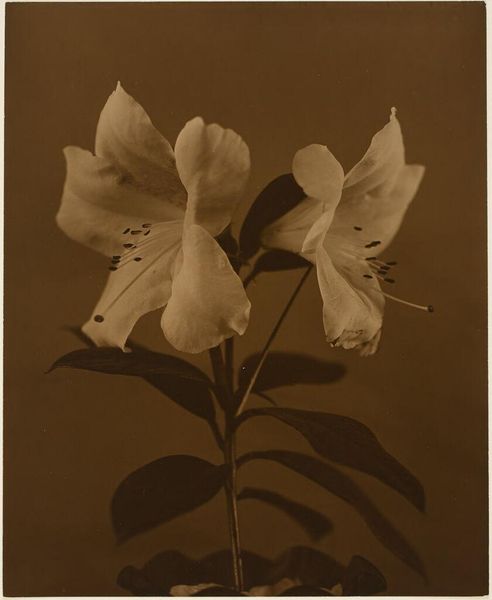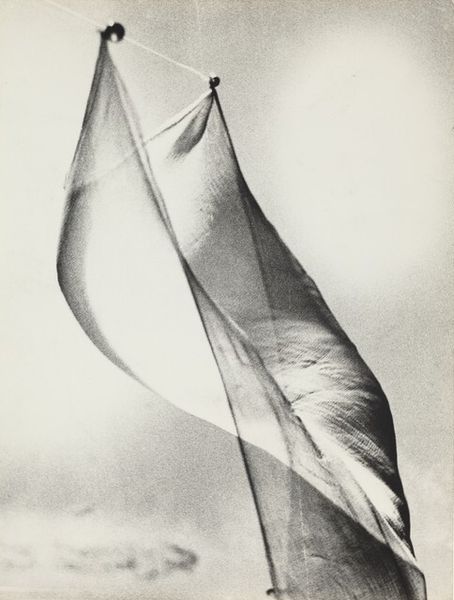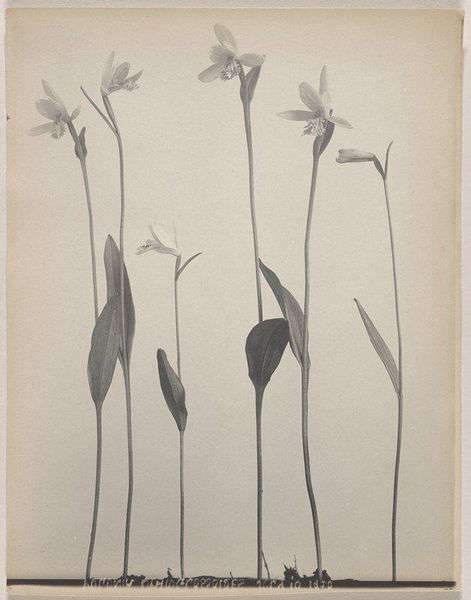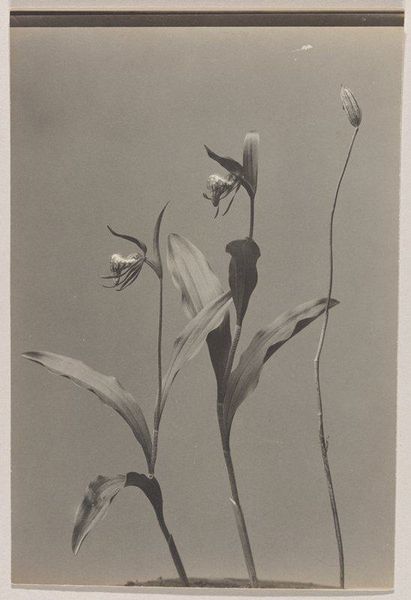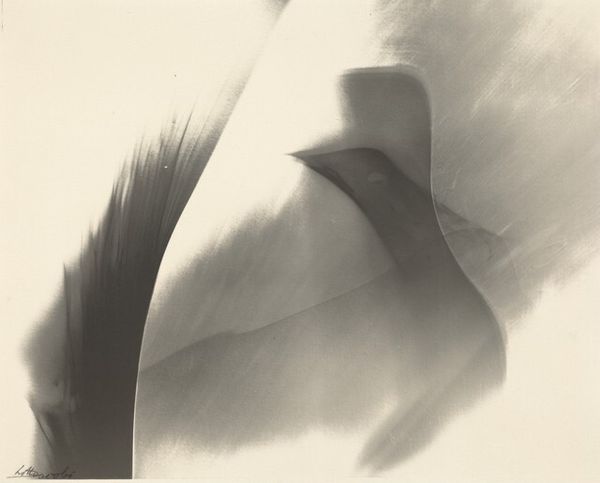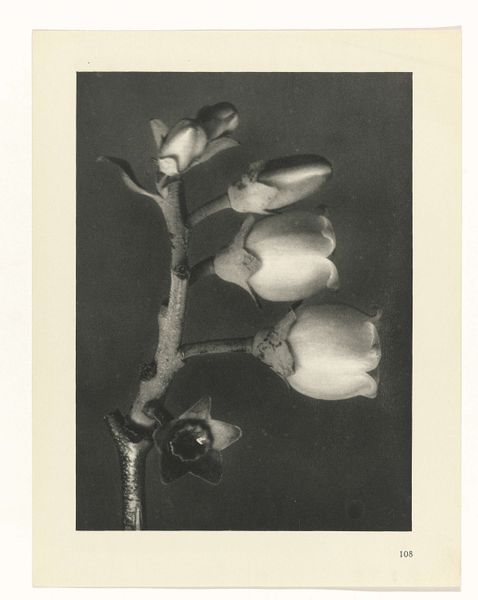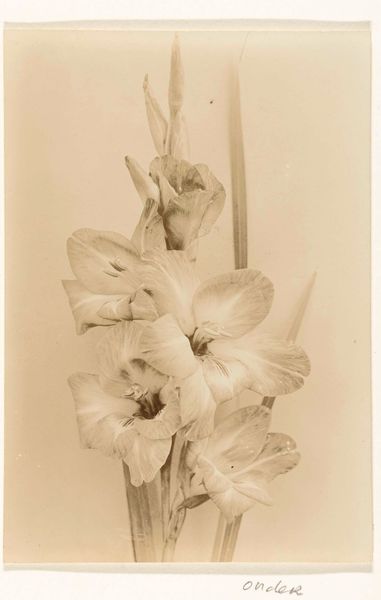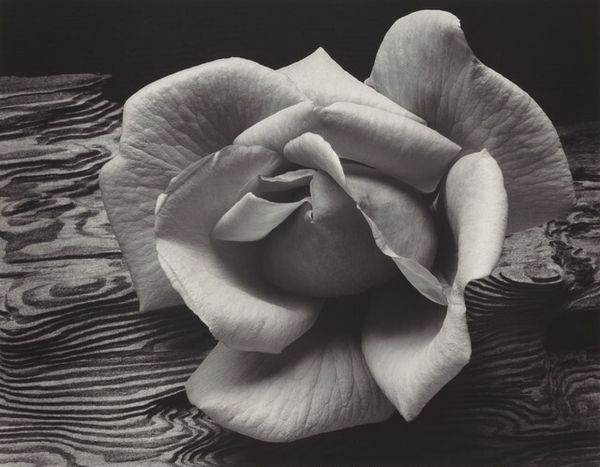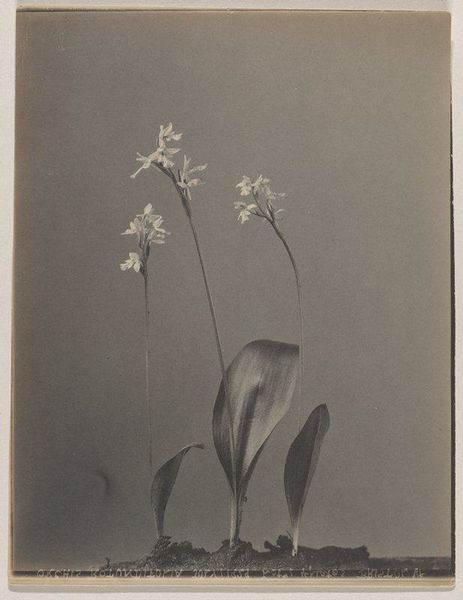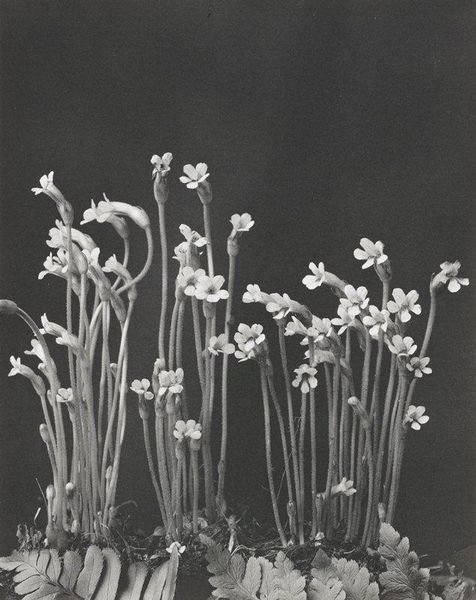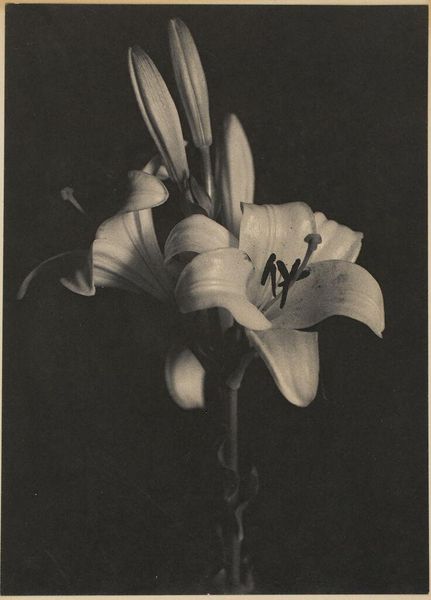
Copyright: Dora Maar,Fair Use
Editor: This is Dora Maar's "Arums" from 1934, a photograph featuring three calla lilies in stark monochrome. The contrast between the flowers and the background is so dramatic, it almost feels confrontational. What do you see in this piece? Curator: It's impossible to ignore the socio-political context in which Maar created this. As a Surrealist photographer deeply involved in leftist politics and later impacted by WWII, "Arums" can be viewed beyond a simple still life. Calla lilies, often associated with funerals, gain another layer when considering Maar’s personal and political turmoil. Editor: Funeral connotations… I hadn't thought about that. So, is it a symbol of something lost? Curator: Perhaps a commentary on the fading elegance of a pre-war era or the looming sense of doom. The striking contrast speaks to the heightened awareness of binaries, black and white, good and evil, during times of political strife. Think about the societal pressures on women artists then. Do you see her asserting agency here? Editor: In what way? Curator: The lilies, centrally positioned and sharply focused, command attention. Is Maar, through this precise composition, staking her claim as a photographer in a male-dominated art world? It's worth considering how her later relationship with Picasso overshadowed her independent achievements. This image could be seen as a statement of selfhood before that happened. Editor: I didn't realize there was so much depth. It’s powerful to think about her reclaiming space through her art. Curator: Exactly. The power of art lies in its ability to simultaneously reflect and challenge the circumstances of its creation. Editor: I’ll never look at a flower photo the same way! Thanks for showing me a different lens.
Comments
No comments
Be the first to comment and join the conversation on the ultimate creative platform.
